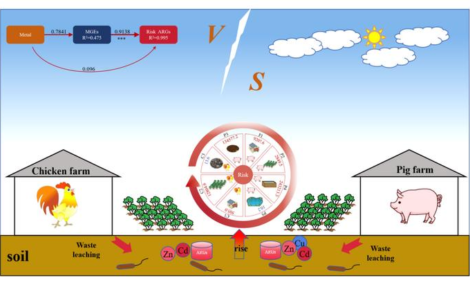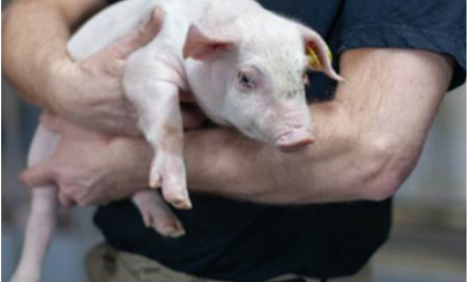



Brazil Pork Industry Overview, August 2004
By USDA, Foreign Agricultural Service - This article provides the pork industry data from the USDA FAS Livestock and Products Annual 2004 report for Brazil. A link to the full report is also provided. The full report includes all the tabular data which we have omitted from this article.Report Highlights
Beef and pork production are projected to increase in 2005 reflecting higher domestic demand due to improved economic conditions. A lower unemployment rate and higher per capita disposable income are expected to stimulate demand for animal protein. Beef exports will continue to increase at significant rates, while pork exports will likely recover next year.
Executive Summary
Cattle inventories continue to expand in Brazil in response to favorable returns to producers, higher investments in animal genetics, and improved pasture and management practices. Competition for land in the major producing areas of the center-west region, mostly from soybeans and sugarcane, have prompted a new movement of cattle towards the north region, mostly to areas located in the pre-Amazon, such as the states of Mato Grosso and Para.
Beef production is expected to increase by 5 percent in 2005, driven mostly by higher domestic demand for beef resulting from a rebound in economic growth and continued expansion of beef exports. Increased beef exports result from Brazil’s competitive advantages, favorable exchange rates, BSE in other countries, and aggressive market promotion efforts.
Pork production is also forecast to increase in 2005, although at a lower rate than in the past few years, mostly driven by higher domestic consumption and expansion of pork exports. Pork exporters have combined competitive prices with aggressive market promotion efforts in new markets to offset the drop in pork exports to Russia due to the Russian import quotas.
Market analysts project economic growth around 5 percent in 2005, reflecting the results of strong measures in fiscal and monetary policies to curb inflation rates and the public deficit. Spurred by record exports, most sectors of the Brazilian economy increased their capacity utilization to meet a growing world demand for Brazilian goods and an improved domestic demand for durable goods and food. Lower unemployment rates and increased disposable income will likely benefit demand for animal proteins.
Production
Post forecasts pork production to increase by two percent in 2005 because of higher
domestic demand and a recovery in pork exports. This projection assumes a moderate
increase in feed costs since the new Crop Plan announced for 2004/05 injects more
subsidized credit to increase corn production. It also assumes that current favorable returns
to hog breeders will continue throughout the first half of next year. Brazilian pork exporters
also project a moderate devaluation of the Brazilian currency in 2005 that will make the
Brazilian product more competitive in world markets.
Our forecast also estimates an increase in hog production in the center-west region due to
investments made by national and foreign groups, mostly in the state of Mato Grosso. These
investments benefit from long-term federal credit lines as well state development programs.
An increase in hog production in the center-west region will off-set a small decline in hog
production in the south region of Brazil where hog producers have balanced supply and
demand to increase profit margins. The three most southern states of Brazil accounted for 44
percent of swine slaughter in 2003, where the production system is highly vertical.
About 40 percent of Brazilian pork production is concentrated among 10 large pork packers,
of which Sadia accounts for 11 percent of production, followed by Perdigao at 8 percent,
Aurora accounting for 7 percent, and Seara with 5 percent. Although Seara only accounts for
5 percent of total pork production in Brazil, the company alone accounts for 26 percent of all
pork exports.
Review of 2004. Post revised pork production to show a marginal increase in 2004 as
opposed to a decline in production as previously estimated. The slight increase in production
results from higher pork exports than previously estimated, and some recovery in the
domestic demand for pork.
Consumption
Pork consumption in 2005 is expected to recover from 2004 because of the projected
improvement of the economy, reduction in unemployment and higher consumer disposable
income.
Pork utilization in Brazil is estimated at 70 percent industrial/processing, and 30 percent
fresh consumption. A promotional campaign to increase fresh pork consumption, which
started in the south, has expanded to other major cities in the southeast. Pork producers
remain concerned about the seasonal trend of fresh pork consumption in Brazil that is
concentrated during the winter months (June-August), and are trying to address this concern
with their campaign to promote the benefits of pork consumption year-round. Pork
producers are trying to close the gap between the regions of Brazil in terms of pork
consumption. Currently, per capita pork consumption is concentrated in the South with per
capita consumption at 18 kilograms and the Southeast at 15 kilograms, while the Center-
West (11 kilograms) and Northeast (6 kilograms) regions consume less pork.
Trade
Pork exports are projected to increase by a small rate in 2005, after a decline this year.
According to trade sources, although pork exports are still too concentrated in the Russian
market, exports to other non-traditional markets are increasing through negotiations to
resolve SPS issues and aggressive market promotion.
The volume of pork exports during Jan-Jun 2004 declined by 5 percent. This result is
significantly better than previously estimated by pork exporters and reflects increased
exports to other markets that offset the decline of exports to Russia. The value of pork
exports during Jan-Jun 2004 jumped by 27 percent, due to a higher average price of US$
1,411.50 per metric ton, up 34 percent from last year.
The Russian market share of Brazilian pork exports dropped slightly from 62 to 61 percent
during Jan-Jun 2004, but Brazilian pork exporters are optimistic that they will account for 77
percent of the Russian quota in 2004. This is because of high volumes of exports to Russia
during the first half of the year and the competitive price of Brazilian pork. The increase in
the average export price per ton to Russia also reflects increased demand for pork cuts.
The outbreak of Foot-and-Mouth disease in June 2004 in the Amazon region prompted
interruptions of pork exports to Argentina and Russia. However, exports were resumed two
weeks later.
According to trade sources, the strategy of Brazilian pork exporters to overcome the impact
of the Russian quota on pork imports was to diversify their export destinations through an
aggressive market promotion effort and competitive prices. During Jan-Jun 2004, pork
exports increased to other traditional Brazilian markets, such as South Africa, Singapore,
Ukraine, Bulgaria, Armenia, and Lithuania.
Marketing
In addition to the domestic campaign to increase consumption of fresh pork, Brazilian pork
exporters initiated a marketing program in 2002 to expand overseas sales of pork. The
program is half financed by the Brazilian Pork Processors and Exporters Association
(ABIPECS) and the other half by the Federal Government Export Promotion Agency (APEX).
In 2004, the program has received additional funds of US$ 1.2 million.
ABIPECS is a private, non-profit organization aimed at supporting pork exporters in overseas
markets. Since pork processors and exporters in Brazil are also the poultry processors and
exporters, ABIPECS works jointly with ABEF, the poultry exporters association, in market
promotion. They share the same offices and staff, but their market promotion budgets are
separate. ABIPECS’ major goal is to develop new markets for Brazilian pork exports that are
still highly concentrated in Russia. Pork exports are also concentrated among five major
companies, which account for 72 percent of all exports (based on 2002 data): Seara (26%),
Sadia (17%), Perdigao (14%), Pamplona (10%), and Frangosul (5%). The same
concentration is true for the three most southern states of Brazil.
Market promotion programs developed by ABIPECS include: trade servicing, participation in
trade shows (principally FOODEX Japan, HOFEX Hong Kong, World Food Moscow, SIAL, and
ANUGA Germany), display and sampling of products, sales catalogs in foreign languages,
trade missions, reverse trade missions, and publicity. More recently, ABIEC jointly with the
Brazilian Embassy in certain important cities of the world has innovated their programs by
promoting Brazilian “barbecue” style (churrasco) for selected audiences. Brazilian “barbecue”
style restaurants (churrascarias) are growing in different countries of the world, such as in
the United States and China.
Target overseas markets include: Asia, the European Union, and other countries in Latin
America. Since Russia became the largest importer of Brazilian pork, ABIPECS is targeting
Russian retailers in their promotional efforts to avoid the high cost of doing business in
Russia through European trading companies.
Policy
The same programs referred on pages 6 and 7 of this report apply to pork packers. In addition, pork packers can also benefit from a subsidized long-term credit program through the Ministry of Science and Technology (MCT) to finance projects aimed at genetic development and improvements in pork quality and carcass yields. Total funds allocated under this program for 2003/04 are estimated at US$ 10 million.
Further Information
To read the full report please click here (PDF format)
List of Articles in this series
To view our complete list of Livestock and Products reports, please click hereSource: USDA, Foreign Agricultural Service - Annual Livestock and Products Report - August 2004








